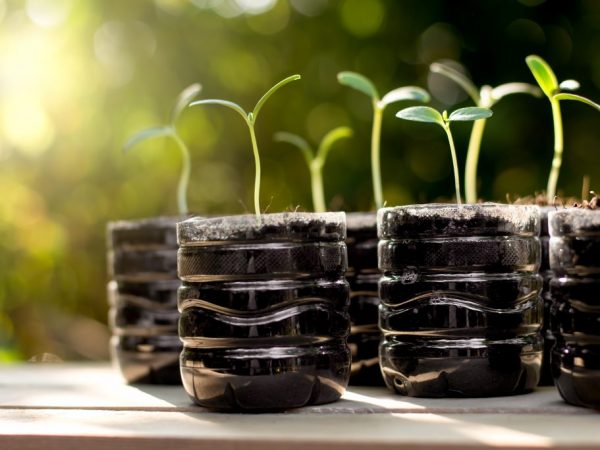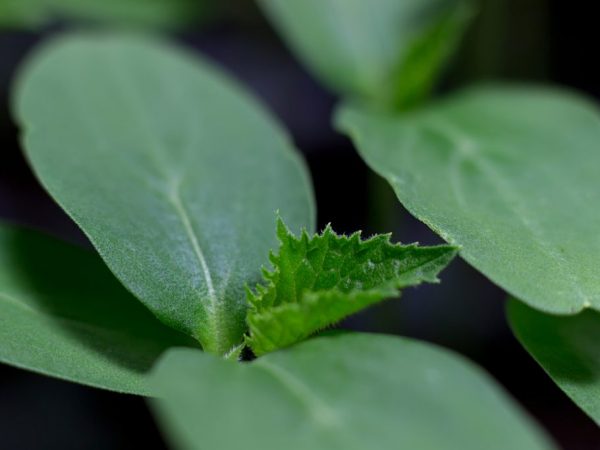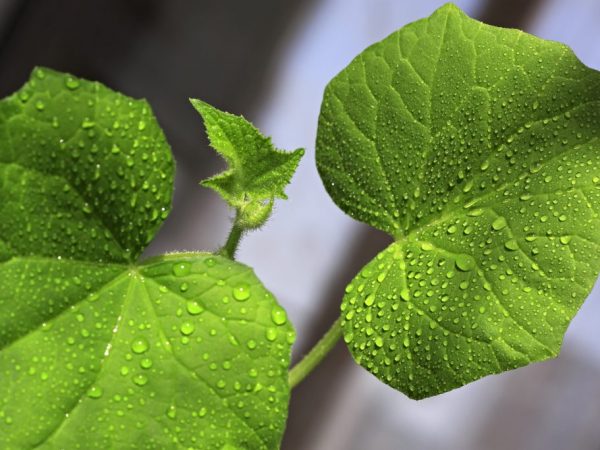Growing cucumbers in a bottle
With the daily use of cucumbers in food, the human body is cleansed of unnecessary elements, toxins and toxins. Of course, a lot depends on how the cucumbers were grown. There are a number of planting methods, including one that answers the question of how to grow cucumbers in a bottle. Planting cucumbers in 5 liter bottles is considered an effective and reliable method of growing vegetables.

Growing cucumbers in a bottle
Features of the method
Growing cucumbers in plastic bottles is a proven method for a long time. Plants feel comfortable in five-liter containers, plastic containers are lightweight, inexpensive. You can grow cucumbers in a plastic bottle without using land, for example, on the balcony of an apartment.
Gardeners are familiar with the successful experiments of growing vegetables on the balcony in buckets and boxes. But buckets and boxes take up most of the balcony area, while plastic containers can be placed more tightly, moreover, they are good at letting the sun go.
Cucumbers in five-liter bottles are planted in open ground - this planting method is suitable for land owners. Such shelters on the land serve as a kind of greenhouses in which cucumbers will bear fruit, even if the summer is cold and short. You can plant early varieties and enjoy fresh fragrant cucumbers at the beginning of summer.
Benefits
- In five-liter containers, the landings are protected from the bear.
- The shape of the container reduces the amount of water required for watering cucumbers. With this cultivation technology, water during irrigation gets exactly to the roots.
- Cucumbers in bottles are kept from unwanted weeds, containers do not interfere with the normal development of cucumbers and do not take important elements from the soil.
Preparing for landing
When growing cucumber in plastic bottles, the land is prepared in advance for planting plants. Choose a soil that is similar in composition to that which is located on the open ground in the area. The soil should be loose so that the soil is good for air and moisture. A good option is to buy ready-made soil for cucumbers. To make your own cucumber soil in a plastic bottle, certain ingredients are used.
Soil preparation
To prepare the soil you will need:
- ordinary soil from the land;
- rotten tree leaves;
- peat;
- drainage (sunflower seed husks, egg shells or moss are used as drainage).
Birch ash is added to improve yields.
All components are mixed in approximately equal proportions.
Preparing bottles

Growing cucumbers is easy
After preparing the soil for planting cucumbers, they begin to prepare plastic containers. For growing cucumbers, containers with a volume of 2 liters and 5 liters are suitable. In containers with a volume of 5 liters, cucumbers will be more spacious. To prepare the bottle, cut off a third of it from above. The result is a plastic pot with a lid.The bottom of the pot is pierced, making holes for excess water to drain out. Next, the cut plastic containers are filled with soil, occasionally shaking the bottle. A couple of centimeters should remain until the trimmed edge. After that, they begin to plant the germinated seeds.
Planting cucumbers
How can you plant cucumbers in a bottle? It is not worth planting more than 5 seeds in one container: sprouts require free space in order to fully grow and develop. Plastic bottles with already planted seeds are recommended to be placed on a loggia or transported to a summer cottage and placed in the ground. Plastic containers are buried in the ground by about 2/3. Next, the container with seeds is covered with a lid left over from pruning. Such a measure is necessary so that a greenhouse forms in the seed container: this ensures normal development of the plantings and protects against temperature changes. Later, when the plants rise and gain strength, the covers are removed.
When planting cucumbers in a bottle in the open ground, holes are made at the bottom of the container or cut off completely, leaving only the sides.
Plastic bottles can also be used for planting seedlings. For planting seedlings, one side wall is removed, the cut container is filled with earth and the seeds are planted.
Such a technology for growing seedlings is suitable for growing different vegetables: the same method can be used to grow greens on the balcony.
Care
When cucumbers are planted for the winter in a plastic container, After a certain time, it remains only to create conditions for favorable growth and development of plantings. Cucumbers are sensitive plants, they love warmth, but they do not like the direct scorching sun. Caring for cucumbers planted in plastic containers is almost the same as for cucumbers in a greenhouse.
During the growing period, cucumbers need to be well watered. They are irrigated as needed, usually every other day, with extremely warm, settled water (21-23 ° C). Irrigation is carried out before the appearance of flowers: every 6 days, and during the period of fruit ripening - every 3 days.
Feeding cucumbers

It is better to feed cucumbers in the morning.
After the cucumbers have risen, after 2-3 weeks, they begin to fertilize them. To do this, use a non-concentrated solution. First, take 15 g of potassium and 5 g of ammonium nitrate, 30 g of superphosphate and 5 g of magnesium sulfate. All this is diluted in 10 liters of water. The viable cucumber bushes are carefully watered with this solution, trying not to catch the leaves of the plant.
After a week and a half, plantings are fertilized with humus diluted in water in a ratio of 1:20. Top dressing is carried out in cloudy weather in the first half of the day, and in sunny weather - in the late afternoon.
Making whips
It doesn't matter where the cucumbers grow: in a greenhouse or in a plastic container on the balcony, in any case, you need to worry about creating lashes. The procedure is carried out only after the third leaf has grown. It is removed with scissors. They do this as carefully as possible so as not to touch the trunk. After this, a side lash will grow. Every third newly grown leaf is cut off.
The stems of the plant are systematically tied up as they grow. The fruits are constantly harvested, which contributes to a larger harvest of cucumbers.
Diseases and pests
It is necessary to observe the color of the leaves on the bushes. If the leaves began to become covered with yellow-brown spots, the spider mites hit the cucumbers. After the discovery of the disease, they begin to process the bushes as soon as possible, otherwise the leaves will dry out.
Processing with tinctures
For processing the leaves, use the infusion:
- Garlic. For its preparation, take 5 cloves of garlic, finely chop or pass through a garlic dish, pour hot water. The mixture is infused for about 6 hours.
- Onion husks. Onion husks are poured into a half-liter jar and poured with warm water, allowed to brew well and diluted in a 1: 2 ratio.
Infusions are grated and treated with plantings in places where ticks accumulate.
Powdery mildew is considered the most serious disease.Cucumber leaves have an unhealthy appearance, become covered with a dull bloom, dry and fall off. If you do not start caring for the plant in time, it will completely die. It is possible to save the plant if you treat the leaves with diluted potassium permanganate or sprinkle with sulfur. The procedure is carried out only in warm, cloudless weather.
Downy mildew manifests itself as greasy spots on the leaves. The foliage dries and falls off. As soon as the disease manifests itself, the plant is stopped to fertilize and irrigate, and is immediately processed.
Ants, aphids, and ticks are dangerous for cucumbers. Insecticides are used to kill pests.
Gardening Tips
The first cucumbers are cut in the morning. Then they are cut 3 times a day. If not harvested on time, overgrown fruits will negatively affect the new harvest.
Spoiled ovaries must be removed in time.


